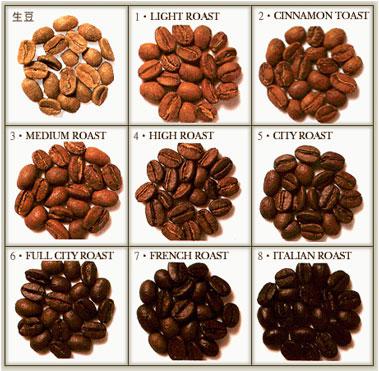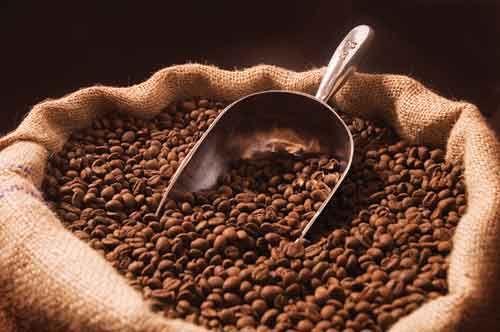Introduction to the characteristics of the manor producing area with a strong sweet taste of Mexican coffee
The Olmec civilization was born in the tropical jungles of the San Lorenzo Highlands of Central America around 1200 BC. San Lorenzo, the center of the early Olmec civilization, flourished for about 300 years and was destroyed by violence around 900 BC. The center of the Olmec civilization then moved to Raventa near the Gulf of Mexico. The Olmec civilization finally disappeared around 400 BC and was replaced by the Abbey Olmec culture. The exact reason for its disappearance is not known, but it has affected a large number of Central American civilizations. Many features of the Olmec civilization, such as the construction of pyramids and palaces, jade carving, jaguar and serpent worship, were also common elements of later Central American civilizations. Most scholars believe that Olmec civilization is the matrix of Mayan, Sapottek, Tiotihuakan and other civilizations. But others believe that the relationship between the Olmec civilization and other Central American civilizations was sisterhood in 1519, when the Spaniards invaded Mexico and in 1521 the Aztec capital Tenochtitl á n was conquered by the Tlaxcalteca, the main enemy of Spain and Aztec. But Spain did not completely conquer Aztec, but completed it two centuries later, and there were two main reasons why the Spaniards won.
The Aztecs sacrifice many people every year, mostly from prisoners of war, because they believe that there must be constant human sacrifice for the universe to continue to work. But in time of peace, the Azrac resorted to a formal "courtesy war" and obtained prisoners of war. That is why the Trascaltka were willing to join the Spanish army against the Azrac.
Another important factor is that the Spaniards brought all kinds of plagues and infectious diseases to the Americas. Smallpox, influenza, plague, measles, hundreds of thousands of natives were infected, and these epidemics could kill about 8 million local people.
The selection of Mexican coffee is generally carried out manually. The main basis for selection is according to the fullness of coffee particles, whether it is uniform, and then grade it. Generally speaking, coffee with full and uniform grains is easier to preserve. Only the fullest and most evenly grained coffee beans can be roasted to represent the best and best coffee in the country.
After the workers picked the coffee beans, they spread the coffee beans in a special house with ventilation on all sides. About a week later, the coffee beans were packed in loosely packed bags so that the wind could blow through the bags. After about seven weeks, the coffee beans changed color and taste. Finally, these coffee beans are selected manually, and the coffee beans of high quality are selected and officially bagged for preservation.
Aldura coffee beans are the top coffee beans in Mexico. This coffee beans have large granules and have strong sweet, sour and good aroma.
Mexicans are optimistic and enthusiastic, and it can also be seen from their coffee that the mellow Mexican coffee is not only loved by the native people, but also praised by many coffee connoisseurs. There are many ways to taste Mexican coffee, mainly divided into alcoholic and non-alcoholic methods. Indeed, after drinking Mexican coffee, it really has the effect of forgetting worries and getting rid of troubles. Mexican coffee has a strong low taste, rich aroma, although slightly bitter but very mellow, has a unique and strong flavor, is a wonderful product of afternoon tea, should be carefully tasted. It is also the best choice for mixing other coffees and the first sip of coffee that beginners should taste. When tasting Mexican coffee, you'd better drink it while it is hot. After an hour of hot coffee, all the aroma will be gone. If the coffee liquid is not filtered, be careful not to stir it into the coffee grounds, just like a slowly aged wine, not only to taste it, but also to rejoice that its color, non-alcoholic Mexican coffee is often paired with milk. Heat a cup of milk, a teaspoon of cinnamon powder and a teaspoon of vanilla powder in a pot at medium temperature, not too hot, and do not boil the milk. Then add the cocoa powder, fully dissolve and stir well. If you like chocolate, you can use chocolate paste instead of cocoa powder and milk. Let the milk dry for about 5 minutes, wait until the milk is slightly cool, then pour the prepared coffee into the coffee cup, decorate the coffee surface with cold cream, then decorate with a piece of cinnamon, and the Mexican coffee is ready. The aromas of chocolate and cinnamon blend together to give off the smell of desert. Tasting such a cup of coffee, you seem to be walking through a desert full of vicissitudes.
Another way to match Mexico's most famous tequila with coffee is to pour a small glass of tequila at the bottom of the cup, followed by milk and coffee, preferably decorated with cream and cinnamon. Tequila is a wine with great stamina. If you have enough courage, you might as well try this alternative coffee.

Important Notice :
前街咖啡 FrontStreet Coffee has moved to new addredd:
FrontStreet Coffee Address: 315,Donghua East Road,GuangZhou
Tel:020 38364473
- Prev

Characteristics of Cupid Coffee varieties with long-lasting aroma and finish introduction to Fine Coffee beans in Manor
This coffee, composed of Rosa, Kaddura and Kaduai, grows in the volcanic area at an altitude of 1600 meters. The treatment plant uses fine honey treatment and traditional washing. The special local microclimate of Panama leads to abundant rainfall in this area and a large temperature difference between day and night. Coupled with the unique volcanic rock soil in the volcanic area, as well as meticulous harvesting and fine treatment, this coffee no matter
- Next

Characteristics of Ecuadorian Coffee varieties with large granules introduction to Fine Coffee beans in Manor
The Arabian Coffee Tree was first introduced to Ecuador in 1952 and its coffee is of good quality, especially the coffee harvested in early June. Ecuadorian coffee beans can be divided into two varieties: Galapagos and Gigante, both of which have the characteristics of large granules and heavy weight. Ecuadorian coffee can be divided into first class (No.1) and super excellent (Extra Superior) according to its quality.
Related
- Detailed explanation of Jadeite planting Land in Panamanian Jadeite Manor introduction to the grading system of Jadeite competitive bidding, Red bid, Green bid and Rose Summer
- Story of Coffee planting in Brenka region of Costa Rica Stonehenge Manor anaerobic heavy honey treatment of flavor mouth
- What's on the barrel of Blue Mountain Coffee beans?
- Can American coffee also pull flowers? How to use hot American style to pull out a good-looking pattern?
- Can you make a cold extract with coffee beans? What is the right proportion for cold-extracted coffee formula?
- Indonesian PWN Gold Mandrine Coffee Origin Features Flavor How to Chong? Mandolin coffee is American.
- A brief introduction to the flavor characteristics of Brazilian yellow bourbon coffee beans
- What is the effect of different water quality on the flavor of cold-extracted coffee? What kind of water is best for brewing coffee?
- Why do you think of Rose Summer whenever you mention Panamanian coffee?
- Introduction to the characteristics of authentic blue mountain coffee bean producing areas? What is the CIB Coffee Authority in Jamaica?

